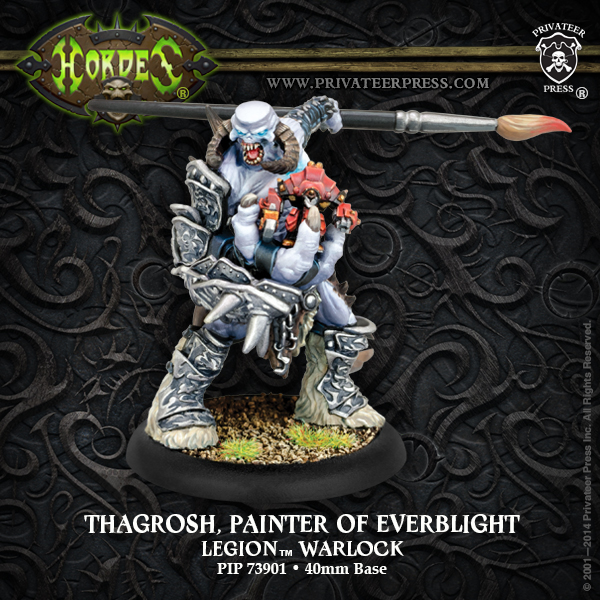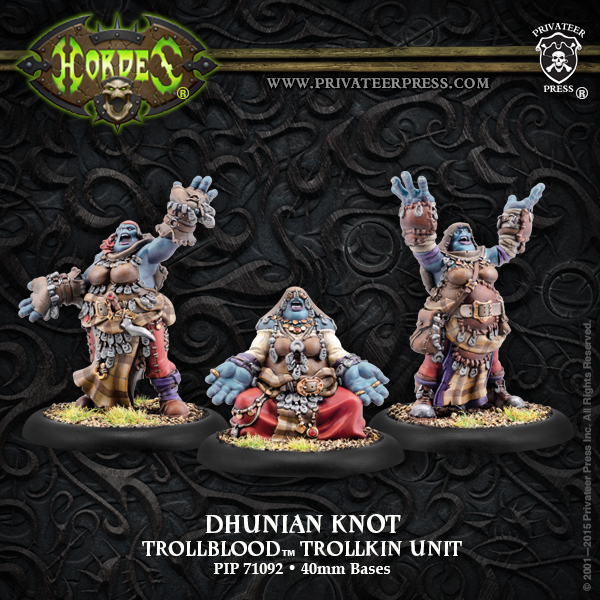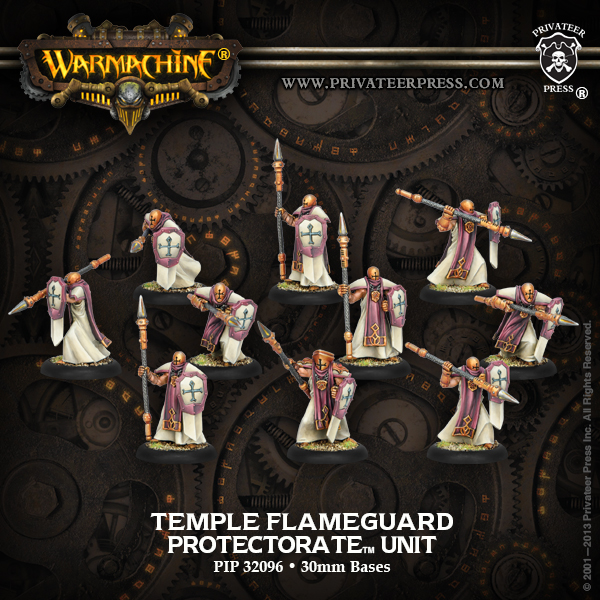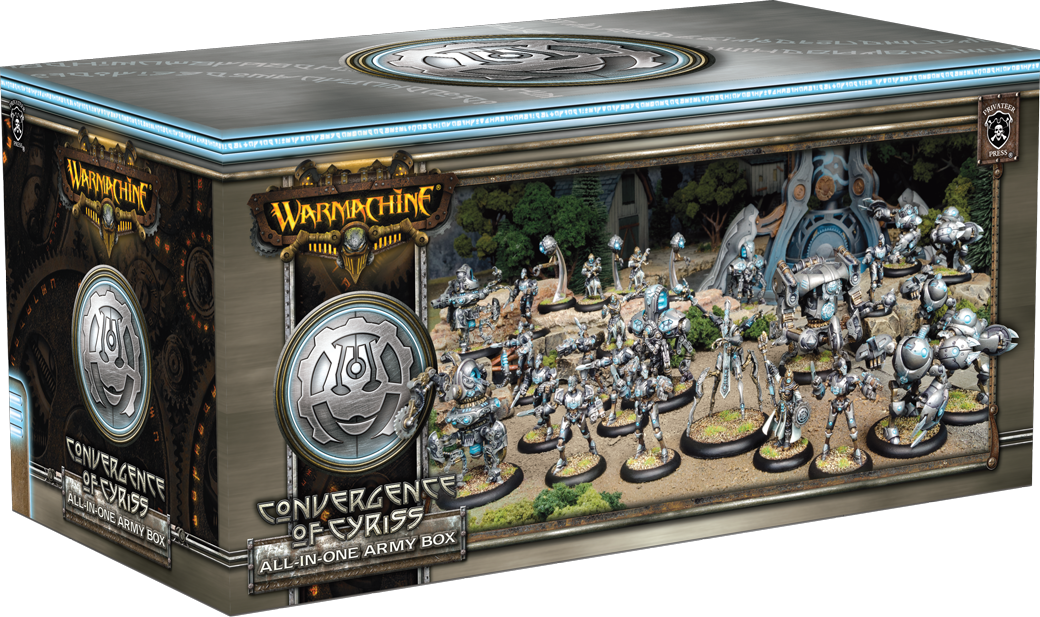Warmachine: Pain-ting Units


Why is it such a pain to paint Privateer Press unit models for Warmachine and Hordes?
Chalkboard here from Chalkboard War, with some thoughts on the pain of painting units for Warmachine and Hordes. So I’m a veteran painter across many systems for many years, and for some reason painting unit models for Warmachine and Hordes seems to take longer than any other painting I’ve ever done. I started to notice this phenomenon this year, when I set myself the goal of painting 500 points of models in a single year (it began as 365 points as part of the Paint 1 point / day challenge through the Warmachine and Hordes painting Facebook group, but when the points values increased I set a new goal of 500 points). I’m currently at 445 points completed, and yet only slightly more than 10% of those points are units. I’ve noticed that I have even selected warlocks and warcasters that run all-battlegroup or battlegroup dominant because of how longit takes me to complete units. Somehow with 40k and Warhammer fantasy I was able to crank out units like no one’s business (so many Orks and Skaven over the years), and I’ve recently started painting a Bolt Action Japanese army and I’m flying through those troops. Talking with other friends who play Warmachine and Hordes, they confirmed that in their experience it takes longer to paint units in this game than other models/other games.
So I gave some throughts to why this might be (if it’s not just me experiencing this). I came up with three theories for why painting units for Warmachine and Hordes takes so much longer than comparable models from other systems and/or longer than other models for these systems–all of which may be true simultaneously. My hunch is that the models are complex, that variety of pose figures into it, and that the number of models in the game itself affects the care taken. I’ll tackle each in turn in an attempt to get to the bottom of the feeling, even if it’sjust my own particular hurdle.
Warmachine and Hordes Unit Models are Complex
This one is a positive, at least in terms of the models. Privateer Press models are often really, really complex. There’s a lot going on with many of the models. Just look at the Dhunian Knot above: so much detail in terms of the rings, bangles, and layers of clothes. Add to that the tartan design on the kilts (optional of course, but still…), and you’ve got some crazy complexity in terms of painting the model. Part of it is the style of the models that Privateer Press has chosen. Compare the way that so many forces have filigree elements in their armor compared to other companies that limit that sort of thing–40k models for instance often (tho increasingly less so in the past two years) have larger and flatter armor surfaces to be painted. While Games Workshop models often have units that can be made more complex if the painter wants, Privateer Press’ complexity is often on the model itself. I’m not saying it’s a hard and fast rule of course (there will be exceptions), but it strikes me that complexity is a key factor in why they take time to paint. Even comparisons within-system seem to match this: while a Titan and a Praetorian both have filigree armor, the Titan’s is larger and more easily painted.
Warmachine and Hordes Unit Models (Can) Lack Variety
This one is the more negative one about Privateer Press’ choices with Warmachine and Hordes, and it’s one rooted in their production methods more than other things. Privateer’s infantry used to be all metal, and even when they started going plastic the kits remain single pose or limited variation sculpts. That means that in a given box of 10 models, there’s usually 3-4 poses and the unit leader. Even the new plastic kits retain only so much variety in this way. There’s something about painting the same exact pose model over and over that seems to slow me down at least. With assemble kits, like the plastic Bolt Action squad I just put together, I could make sure that every model in the unit had a unique look to them. That’s huge in my ability to feel excited about what I’m doing when it comes to painting. Yeah, it can help with assembly-line style production, but still, it can take more energy (in a sense) to get them done.
Smaller Model Count Affects Care
I think this is the critical reason that it takes me so much longer to finish unit models than others. The average model count for Warmachine and Hordes is just lower than many other games. For instance, the Convergence All-in-One Warmachine Army box above has a mere 28 models to the force. With so few models, the viewer looks more at each model than they would in a larger army. Maybe this is the psychological one… I know that each model is a larger relative share of the overall army. Thus, I take more care on each of them. With my huge Skaven army from back in the day, people would hardly see all the models in the rows. I spent time on them, but I also chose a particular level of painting (2 highlights rather than 3+) because of the sheer numbers. They still looked great (at least I thought so), and I would be okay with my opponent pulling out any one model and giving scrutiny. Yet somehow fewer models seems to make them all the more critical in Warmachine and Hordes forces. That might be making me stress more about them, so that means likely avoiding the ones that seem like “a lot of work”–running to Warjacks, Warbeasts, casters, and solos long before I attempt a unit.
These three factors, I think, are what conspire to make units take far longer to paint in a per-model time than other models in the factions and compared to other systems.
~ Am I alone in this? Is there something about the models? About the game system’s size? Do you struggle with units when it comes to painting, or are they a breeze? Why am I experiencing it for this system alone? Share your thoughts in the comments below.
To witness very few painted units (and lots of painted “the rest”) take a look at Chalkboard’s Warmachine and Hordes blog at:






